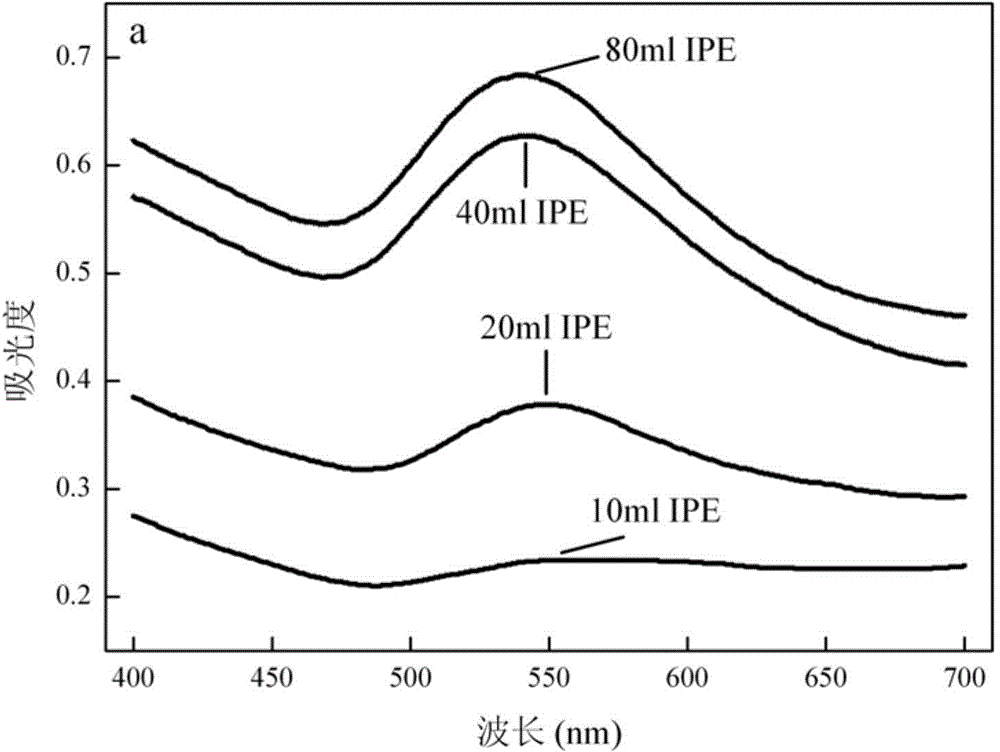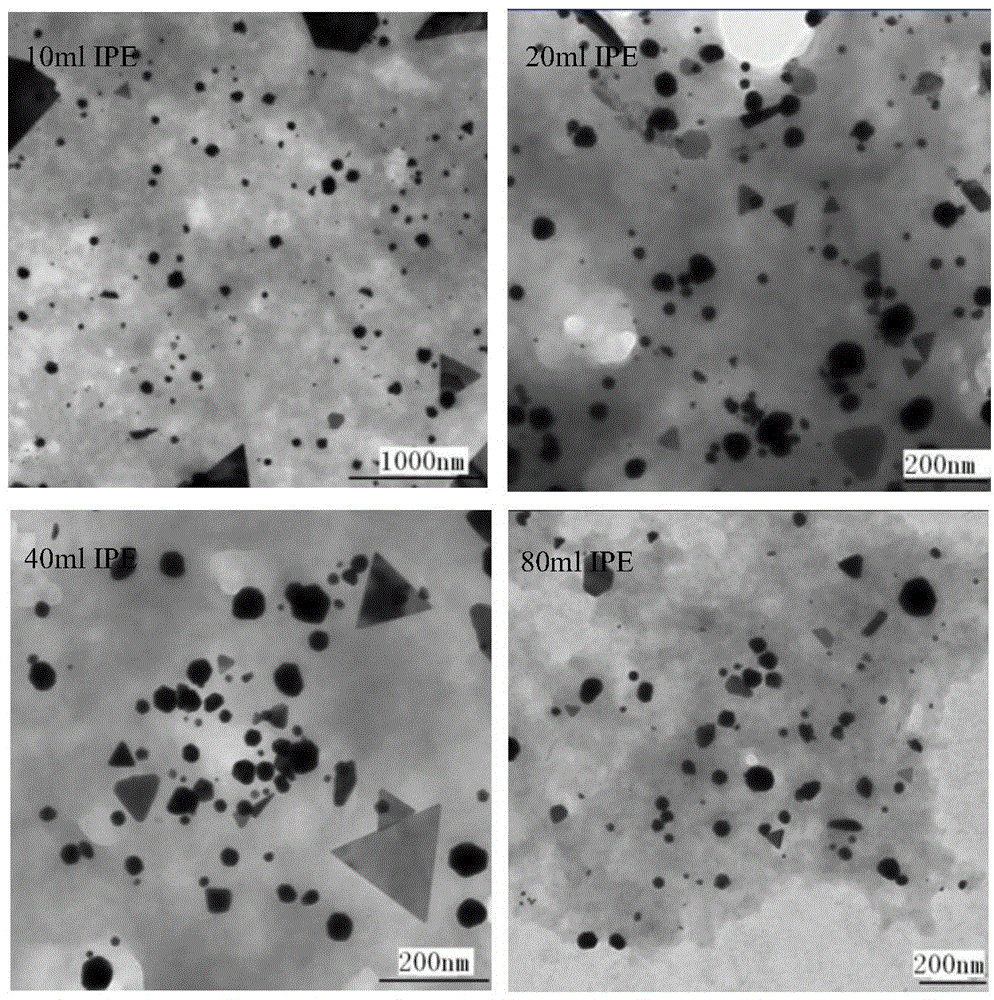Method for synthesizing gold nanoparticles by using pycnoporus sanguineu organisms and application of method for synthesizing gold nanoparticles by using pycnoporus sanguineu organism
A technology of gold nanoparticles and Microporus hemoglobinum, which is applied in the field of microbial synthesis of gold nanoparticles, can solve the problems of limiting the application of gold nanoparticles, high cost, high energy consumption, etc.
- Summary
- Abstract
- Description
- Claims
- Application Information
AI Technical Summary
Problems solved by technology
Method used
Image
Examples
Embodiment 1
[0027] Pycnoporus sanguineus cultured to the stationary phase were collected by centrifugation at 10,000 rpm, 4°C, and 20 min; washed repeatedly with sterile water to remove residual medium components that might adhere. Weigh 10g (wet weight) of microorganisms into a centrifuge tube, crush at 90W, 4s / 4s for 10min, centrifuge at 11000rpm, 4°C, 20min to remove cell debris, and dilute the supernatant to 50ml, which is called intracellular extract. Take 10, 20, 40 and 80ml intracellular extracts and mix them with chloroauric acid stock solution respectively. The total volume of the mixed solution is 100ml, and the final gold ion concentration is 1.0mM. Shake at 30°C and 165rpm for 24h. First, the color of the mixed solution gradually changed from light yellow to purple. Second, the formation of gold nanoparticles was further verified by UV-vis spectroscopy, XRD, and TEM. The characterization results are as follows Figure 1-3 shown.
Embodiment 2
[0029] The steps of this embodiment are substantially the same as those of Example 1, except that 80ml intracellular extract is mixed with different volumes of chloroauric acid solution, the final gold ion concentration is 0.5, 1.0, 1.5 and 2.0mM respectively, and the mixed solution is mixed with sterile The volume of water was adjusted to 100ml, and the TEM characterization results were as follows Figure 4 shown.
Embodiment 3
[0031] The steps of this embodiment are substantially the same as in Example 1, except that 80 ml of the intracellular extract is mixed with a certain volume of chloroauric acid solution, the final gold ion concentration is 1.0 mM, and then the pH of the solution is adjusted with 0.1 M HCl or NaOH The values are 2.0, 4.0, 6.0, 8.0, 10.0 and 12.0 respectively, and the TEM characterization results are as follows Figure 5 shown.
PUM
 Login to view more
Login to view more Abstract
Description
Claims
Application Information
 Login to view more
Login to view more - R&D Engineer
- R&D Manager
- IP Professional
- Industry Leading Data Capabilities
- Powerful AI technology
- Patent DNA Extraction
Browse by: Latest US Patents, China's latest patents, Technical Efficacy Thesaurus, Application Domain, Technology Topic.
© 2024 PatSnap. All rights reserved.Legal|Privacy policy|Modern Slavery Act Transparency Statement|Sitemap



